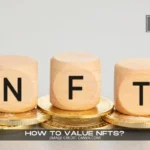Introduction | Investment Funds For Retirement
Preparing for retirement involves carefully planning and managing your finances to ensure a comfortable and secure future. One key aspect of retirement planning is investing in a diversified portfolio that can grow over time. Investment funds, such as mutual funds, exchange-traded funds (ETFs), and index funds, can play a crucial role in helping you achieve your retirement goals. This article will explore the different types of investment funds, their importance for retirement planning, and how to choose the right ones for your retirement portfolio.
Table of Contents
Types of Investment Funds
Mutual Funds
Mutual funds pool money from multiple investors to purchase a diversified mix of stocks, bonds, or other securities. These funds are managed by professional investment managers who make investment decisions on behalf of the fund’s shareholders. Mutual funds can be an attractive option for retirement planning due to their diversification, professional management, and potential for long-term growth.
For any business enquiry, you can contact us at ArabsGeek.com
For more of such financial articles, Consider visiting our sister website at EntrepreneursPilot.com
Exchange-Traded Funds (ETFs) | Investment Funds For Retirement
ETFs are similar to mutual funds but trade like stocks on an exchange. They typically track a specific market index and offer a diversified investment in a single, easily tradable security. ETFs often have lower expense ratios than mutual funds, making them a cost-effective choice for retirement portfolios.
Index Funds
Index funds are a type of mutual fund or ETF designed to track the performance of a specific market index, such as the S&P 500. By investing in a broad market index, index funds offer instant diversification and can be a low-cost way to invest in a wide range of stocks or bonds. This passive investment approach can be an attractive option for retirement planning, as it generally results in lower costs and consistent long-term returns.
Target-Date Funds | Investment Funds For Retirement
Target-date funds, also known as lifecycle or age-based funds, are designed to simplify retirement investing by automatically adjusting their asset allocation based on your target retirement date. As the target date approaches, the fund’s investment mix becomes more conservative, shifting from stocks to bonds to help protect your assets from market fluctuations. This hands-off investment approach can be appealing for retirement savers who prefer not to actively manage their portfolio.
Closed-End Funds
Closed-end funds are a type of investment fund that raises a fixed amount of capital through an initial public offering (IPO) and then trades on an exchange like a stock. These funds typically invest in a diversified portfolio of stocks, bonds, or other securities and are managed by professional investment managers. Unlike mutual funds and ETFs, closed-end funds have a fixed number of shares, which can cause their market price to deviate from their net asset value (NAV).
Why Investment Funds Matter for Retirement
Diversification
Investment funds offer instant diversification by pooling investor money to purchase a broad mix of assets. This diversification helps reduce the overall risk of your retirement portfolio by spreading your investments across multiple securities and asset classes, reducing the impact of any single investment’s poor performance.
Professional Management | Investment Funds For Retirement
Investment funds, particularly mutual funds and closed-end funds, are managed by professional investment managers who have the expertise and resources to analyze market trends and make informed investment decisions. This can be particularly beneficial for retirement savers who lack the time, knowledge, or desire to actively manage their investments.
Long-Term Growth Potential
Investment funds, such as mutual funds, ETFs, and index funds, offer the potential for long-term growth through capital appreciation and dividend income. By investing in a diverse mix of assets, these funds can help grow your retirement savings over time, providing a crucial source of income during your retirement years.
Convenience and Accessibility | Investment Funds For Retirement
Investment funds offer a convenient and accessible way to invest in a wide range of assets, often with relatively low minimum investment requirements. This makes it easier for retirement savers to build a diversified portfolio without the need to purchase and manage individual securities.
Choosing the Right Investment Funds
Assess Your Risk Tolerance
Understanding your risk tolerance is crucial when selecting investment funds for your retirement portfolio. Consider factors such as your investment time horizon, financial goals, and personal comfort with market fluctuations to determine the appropriate mix of stocks, bonds, and other assets in your portfolio.
Define Your Investment Goals
Establish clear investment goals for your retirement, such as the desired retirement age, income needs, and lifestyle expectations. These goals will help guide your investment fund selection and ensure that your portfolio is aligned with your long-term objectives.
Evaluate Costs and Fees | Investment Funds For Retirement
Investment funds can have varying costs and fees, which can impact your overall returns. Be sure to compare expense ratios, trading costs, and any other fees associated with the funds you’re considering. Lower-cost options, such as index funds and ETFs, can be a cost-effective choice for retirement portfolios.
Research Fund Performance
While past performance is not a guarantee of future results, it’s essential to review a fund’s historical performance to gain insight into its potential for long-term growth. Look for funds with a consistent track record of performance and consider how they have performed during various market conditions.
Balancing Your Retirement Portfolio | Investment Funds For Retirement
Asset Allocation
Asset allocation involves dividing your retirement portfolio among different asset classes, such as stocks, bonds, and cash. A well-balanced asset allocation can help manage risk and optimize returns, providing a solid foundation for your retirement savings.
Rebalancing
Regularly rebalancing your retirement portfolio ensures that your asset allocation remains aligned with your risk tolerance and investment goals. This may involve selling some investments and buying others to maintain the desired balance between stocks, bonds, and other assets.
Regular Reviews | Investment Funds For Retirement
Periodically review your retirement portfolio to assess its performance and ensure that it remains on track to meet your investment goals. This may involve adjusting your asset allocation, rebalancing, or even changing your investment strategy as your financial situation or goals evolve.
Maximizing Your Retirement Savings
Contribute Regularly
Consistent contributions to your retirement accounts, such as a 401(k) or IRA, can help maximize your investment fund returns. Consider setting up automatic contributions to ensure you are consistently investing in your retirement.
Utilize Tax-Advantaged Accounts | Investment Funds For Retirement
Investing in tax-advantaged accounts, such as traditional or Roth IRAs and 401(k) plans, can help boost your retirement savings by allowing your investments to grow tax-free or tax-deferred. Be sure to take full advantage of any employer-sponsored retirement plans and matching contributions.
Keep a Long-Term Perspective
Retirement investing is a long-term endeavor, and it’s crucial to maintain a long-term perspective when selecting investment funds and managing your portfolio. Avoid making impulsive decisions based on short-term market fluctuations, and stay focused on your long-term investment goals.
Avoid Emotional Investing
Emotions can be a significant obstacle to successful retirement investing, leading to impulsive decisions and poor investment choices. To avoid emotional investing, develop a clear investment plan, maintain a long-term perspective, and practice discipline when managing your portfolio.
Conclusion | Investment Funds For Retirement
Investment funds can play a critical role in building a well-diversified retirement portfolio that can help you achieve your long-term financial goals. By understanding the various types of investment funds, their benefits for retirement planning, and how to choose the right ones for your portfolio, you can optimize your retirement savings and secure a comfortable future. Remember to maintain a long-term perspective, contribute regularly, and utilize tax-advantaged accounts to maximize your retirement savings.
Frequently Asked Questions (FAQs)
Q1: What are the main types of investment funds suitable for retirement?
The main types of investment funds suitable for retirement include mutual funds, exchange-traded funds (ETFs), index funds, target-date funds, and closed-end funds.
Q2: How do I choose the right investment funds for my retirement portfolio?
To choose the right investment funds, assess your risk tolerance, define your investment goals, evaluate costs and fees, and research fund performance. Consider diversification, professional management, long-term growth potential, and convenience when selecting funds.
Q3: What is the importance of asset allocation in my retirement portfolio?
Asset allocation is crucial for managing risk and optimizing returns in your retirement portfolio. A well-balanced asset allocation ensures that your investments are spread across multiple asset classes, reducing the impact of any single investment’s poor performance.
Q4: How often should I rebalance my retirement portfolio?
There’s no one-size-fits-all answer to this question, but many financial experts recommend rebalancing your retirement portfolio at least once a year or when your asset allocation deviates significantly from your target allocation.
Q5: Can I rely solely on investment funds for my retirement?
While investment funds can play a significant role in building your retirement portfolio, it’s essential to consider other sources of income, such as Social Security, pensions, and annuities, to ensure a well-rounded and secure retirement.











